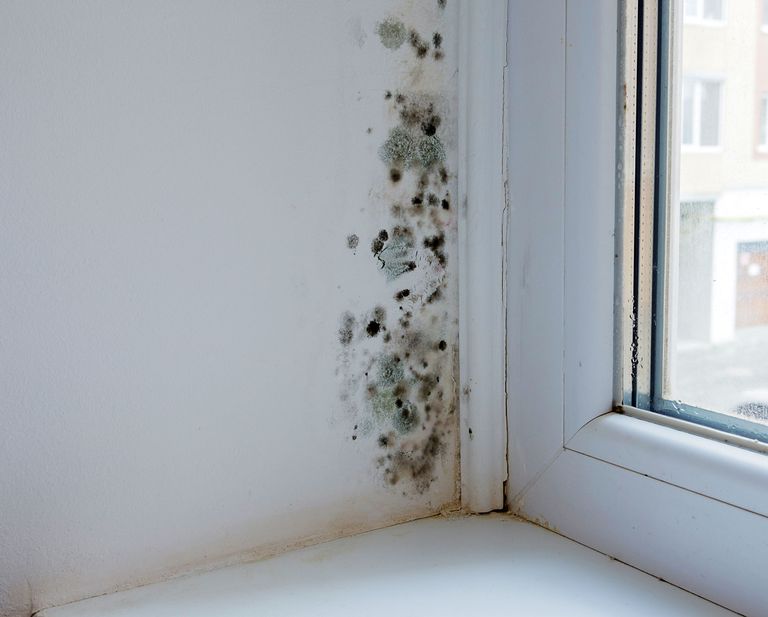What is Mold?
Before we get into the signs, it's essential to understand what mold is. Mold is a type of fungus that thrives in damp, warm environments. It's a natural part of the environment, playing a crucial role in breaking down dead organic matter. However, when it starts growing indoors, it can become a problem.

Types of Mold Commonly Found in Homes
There are many types of mold, but some of the most common in homes include:
- Stachybotrys (Black Mold): Known for its dark color and potential toxicity.
- Penicillium: Often found on wallpaper, fabrics, and carpets.
- Aspergillus: Commonly found in household dust and on damp building materials.
- Cladosporium: Can grow in cool areas, such as basements and under floorboards.
Why Mold is a Problem
Health Risks Associated with Mold
Mold exposure can lead to various health issues, especially for those with allergies, asthma, or compromised immune systems. Common symptoms include:
- Sneezing and coughing
- Skin rashes
- Eye irritation
- Respiratory problems
- Headaches
Structural Damage Caused by Mold
Mold doesn't just affect health; it can also cause significant structural damage. It can weaken walls, floors, and ceilings, leading to expensive repairs. Mold feeds on organic materials like wood and drywall, causing them to deteriorate over time.
Common Causes of Mold Growth
Understanding what causes mold can help you prevent it. The primary culprits include:
Moisture and Humidity
Mold needs moisture to grow. High humidity levels in your home can create the perfect environment for mold spores to thrive.
Poor Ventilation
Lack of proper ventilation can trap moisture inside, leading to mold growth. Bathrooms, kitchens, and basements are particularly vulnerable.
Leaks and Water Damage
Leaks from pipes, roofs, or windows can create damp areas where mold can grow. Water damage from flooding or heavy rains can also lead to mold problems.

Signs You Need Mold Remediation
Visible Mold Growth
The most obvious sign is seeing mold itself. Mold can appear as black, green, white, or even pink spots on walls, ceilings, floors, and other surfaces. Common places include:
- Bathrooms
- Basements
- Around windows
- Under sinks
Musty Odors
A persistent musty smell is a strong indicator of mold, even if you can't see it. These odors are usually strongest in areas like basements, crawl spaces, and behind walls.
Water Damage
If you've had any form of water damage in the past, there's a high chance mold could be present. Look for:
- Stains on walls or ceilings
- Soft or squishy floors
- Bubbling or peeling paint
Health Symptoms
Experiencing health issues that seem to improve when you're away from home can be a sign of mold. Symptoms to watch out for include:
- Allergic reactions
- Chronic coughing or sneezing
- Frequent headaches
- Asthma attacks
Condensation
Frequent condensation on windows and walls can indicate high humidity levels, creating a breeding ground for mold.
Peeling or Bubbling Paint
Paint that is peeling or bubbling can be a sign of moisture problems behind the walls, which can lead to mold growth.
Discoloration and Stains
Unusual stains or discoloration on walls, ceilings, or floors can be mold-related. These stains may appear as dark spots or patches.
High Humidity Levels
Using a hygrometer to measure indoor humidity can help. Ideally, indoor humidity should be between 30-50%. Higher levels can support mold growth.
Warped Wood and Other Materials
Moisture can cause wood and other materials to warp. If you notice warped floors, walls, or furniture, it's a sign of potential mold issues.
Frequent Cold-Like Symptoms
If you or your family members are frequently experiencing cold-like symptoms that don't go away, it could be due to mold exposure.
Steps to Take if You Suspect Mold
Inspection and Testing
First, conduct a thorough inspection. You can hire a professional or use DIY mold testing kits available in stores. However, professionals have the expertise to detect mold that might be hidden from plain sight.
Remediation Process
For significant mold problems, it's best to hire a professional remediation service. They will:
- Contain the Area: Preventing mold spores from spreading.
- Remove Affected Materials: Safely disposing of mold-infested items.
- Clean and Disinfect: Using specialized equipment and cleaning agents.
- Restore: Repairing or replacing damaged structures.
If you prefer a DIY approach, ensure you wear protective gear and use proper cleaning agents like bleach or commercial mold removers. Always follow safety precautions to avoid exposure.
Preventive Measures
To prevent mold from returning:
- Reduce Humidity: Use dehumidifiers and ensure proper ventilation.
- Fix Leaks Promptly: Address any water issues immediately.
- Regular Maintenance: Regularly inspect your home for signs of moisture or mold.
Conclusion
Mold is more than just an unsightly problem; it's a health hazard and a potential threat to your home's structure. By recognizing the signs early and taking prompt action, you can protect your home and your health. Don't wait until it's too late—address mold issues as soon as they arise.
FAQs
What should I do if I find mold in my home?
First, identify and eliminate the moisture source. Then, clean small areas with mold cleaner or a bleach solution. For larger infestations, hire a professional.
Can I remove mold myself or do I need a professional?
You can handle small mold patches yourself with proper precautions. For extensive mold, it's safer and more effective to hire professionals.
How can I prevent mold from returning after remediation?
Maintain low humidity levels, fix leaks immediately, and ensure good ventilation. Regular inspections and cleaning can also help.
What health problems can mold cause?
Mold exposure can cause respiratory issues, allergic reactions, skin irritation, and exacerbate asthma. Long-term exposure can lead to more severe health problems.
Is mold remediation covered by homeowner’s insurance?
It depends on your policy and the cause of the mold. Some policies cover mold damage if it's due to a covered peril, like water damage from a burst pipe. Check with your insurance provider for details.